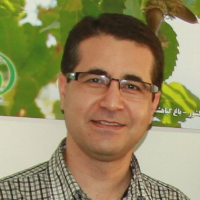Study Changes in Biological Indicators in Forest Stands with Different Structure in Kurdistan Province
Microbial respiration and microbial carbon biomass are two important biological indicators for assessing ecosystem quality that can be used to determine ecosystem health. The aim of this study was to investigate the change in soil microbial activities in forest different structure in Kurdistan province.
Four one-hectare sample plots (100×100 meters) were selected in Baneh (two sample plots), Marivan and Sarvabad counties and structural characteristics of stands were measured. In order to investigate the changes in soil microbial activities in each sample plot, seven soil samples were taken from a depth of 0-10 cm in each site (a total of 28 soil samples) in August 2019 (28 samples in total). In this study, microbial activities including soil respiration, induced soil respiration, nitrification potential and microbial carbon biomass were compared in four stands (site). One-Way ANOVA and Duncan's test were used to evaluate the significance of differences in soil microbial characteristics between the four sites.
The results showed that there was a significant difference between the parameters of soil respiration, induced soil respiration and microbial carbon biomass of soil between the four studied stands, but no significant difference was observed in terms of nitrification potential. Also, for soil respiration, induced soil respiration and microbial carbon biomass of soil parameters in Belveh site with 2.45 (mg CO2.g -1 dm. 24 -1 ), Belveh site with 48.21 (mg CO2.100g -1 dm. 24 -1), Dolah-Naw site with 280.9 (µg N.g-1 dm.5h-1) and Saraki site with 5.35 (mg carbon biomass /100 gr) had the highest average. Therefore, for nitrification potential of Doleh Naw (with young aged coppice forest) site was the highest values and highest value of soil respiration, induced soil respiration observed in Belveh site (unaged coppice forest with to two story layer).
Therefore, forest structure area effects on soil microbial characteristics (soil respiration, induced soil respiration and microbial carbon biomass). For sustainable forest management, it is recommended to study soil microbial activities in periodic monitoring and positive effect microbial carbon biomass on forest, in Sareki and Belveh site (area lowest average of microbial carbon biomass), afforestation with native species be done.
- حق عضویت دریافتی صرف حمایت از نشریات عضو و نگهداری، تکمیل و توسعه مگیران میشود.
- پرداخت حق اشتراک و دانلود مقالات اجازه بازنشر آن در سایر رسانههای چاپی و دیجیتال را به کاربر نمیدهد.



